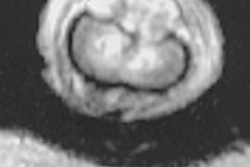Anytime a professional athlete suffers a knee injury, the public anxiously awaits the results of an MRI. The intense media media spotlight makes it easy to understand why an armchair quarterback might think MRI is the best and only way to detect torn cartilage or ligament damage.
But that may not always be the case, particularly for young athletes, according to Dr. Carl Stanitski, a professor of orthopedic surgery at the Medical University of South Carolina in Charleston.
"Clinical diagnosis of injuries of the knee in children, when done by an experienced surgeon, has proven as accurate if not more accurate than MRI," Stanitski said. "MRI is, unfortunately, used as a screening study by physicians not sophisticated in musculoskeletal assessment."
Along with Dr. Christopher Iobst, Stanitski wrote an article in the latest issue of Clinics in Sports Medicine that discusses the use of imaging in diagnosing acute knee injuries in pediatric athletes.
They argued that "MR imaging studies should not be ordered as screening tests by nonsurgical physicians. Major errors can occur in radiologists’ interpretations of knee MR imaging studies in skeletally immature patients and should not take the place of detailed clinical examinations" (Clinics in Sports Medicine, October 2000, Vol.19:4, pp.621-635).
Instead, it's more important for physicians to assess the "physiologic maturity and projected remaining growth" of a patient, as this information -- not chronological age -- is key in determining treatment, they wrote.
The authors called "shoe size stability, peak height velocity, and menarche" objective indicators of physiological maturity. "In the emerging young athlete, a torn ACL is not a surgical emergency, despite media images of celebrity athletes," they added.
Stanitski and Iobst recommended against using MRI as a screening method for meniscal injuries in young patients, and consider the function of MRI in diagnosing chondral or osteochondral injuries to be "uncertain" in pediatric cases.
The doctors also cited a previous study in the Journal of Pediatric Orthopedics, in which researchers from the Naval Medical Center in San Diego set out to correlate the findings of MRI and knee arthroscopy in children and adolescents.
In the study, 51 patients, ages 4-17, underwent arthroscopy and MRI. A retrospective evaluation of their records revealed that preoperative MRI in patients 15 years and younger had "an appreciable decrease in sensitivity, specificity, positive predictive value, and accuracy for essentially all categories of pathologic changes" (Journal of Pediatric Orthopedics, September 1998, Vol.18:5, pp.675-678).
But Dr. Douglas Beall, a fellow at the Mayo Clinic in Rochester, MN who specializes in musculoskeletal and sports imaging, would encourage doctors like Stanitski to use MRI more often. Beall described a recent meta-analysis that found MRI's sensitivity to be between 80% and 100%.
In another study, Dr. Scott Boden and colleagues at George Washington Medical Center in Washington, DC, found the diagnostic accuracy of MRI of the knee was approximately 90%. In the study sample, three radiologists who were blinded to the results reviewed MRI scans of 74 asymptomatic volunteers without histories or symptoms of knee injury. Twenty-six scans of symptomatic patients were added to the mix.
"The prevalence of MRI findings of a meniscal tear increased from 13% in individuals younger than 45 years of age to 36% in those older than 45," they reported (Clinical Orthopedics and Related Research, September 1992, Vol.282, pp.177-185).
While Beall and Stanitski agreed that the diagnosis of acute knee injuries in pediatric patients is more difficult than the same diagnosis in adults, Beall said MRI should not be dismissed as an ineffective tool in this patient population.
"Children are not small adults," he said. "They have a different physiological response to exercise and have many cartilaginous growth areas that are susceptible to injuries. Children can have injuries not seen in adults that may be difficult to detect on physical exam and plain-film radiography. Knee injuries are very common in pediatric patients and require appropriate evaluation that often includes radiographs, MRI, and arthroscopy."
According to a recent study of pediatric patients treated at Children’s Hospital in Philadelphia, MRI has proven effective. Of 25 children who sustained acute knee injuries, MRI detected occult fractures in all 25, according the 1997 study in Clinical Orthopedics (September 1997, Vol.342, pp.141-146).
"This study clearly demonstrates the value of MR imaging in a situation that is often clinically confusing and that is unique to pediatric patients," Beall said. "MRI can provide as much, and arguably more, value in the evaluation of a knee injury in a pediatric patient."
But Stanitski believes that pediatric MRI studies can lead to overdiagnosis.
"MRI are commonly over-read by radiologists in reviewing pediatric MRI studies," he said. "This has been documented in a number of studies of MRI in normal children, as well as in children with intra-articular pathology which had false-positive and false-negative rates when the studies were reported by radiologists."
Whichever imaging modality is used, Stanitski cautioned that, for young patients, clinicians must sometimes act as counselors to the parents, and explain in detail the imaging and surgical options available.
By Jill R. DorsonAuntMinnie.com contributing writer
November 21, 2000
Copyright © 2000 AuntMinnie.com


.fFmgij6Hin.png?auto=compress%2Cformat&fit=crop&h=100&q=70&w=100)





.fFmgij6Hin.png?auto=compress%2Cformat&fit=crop&h=167&q=70&w=250)











